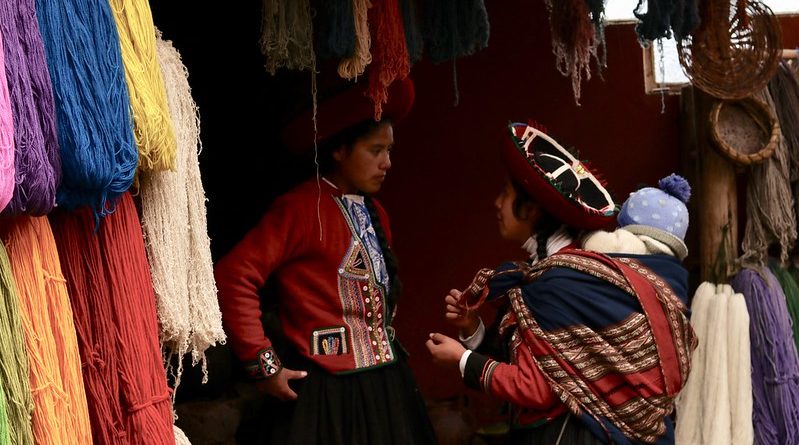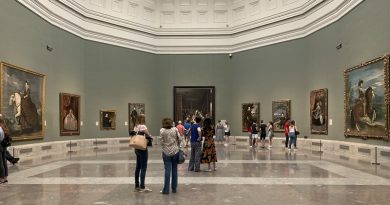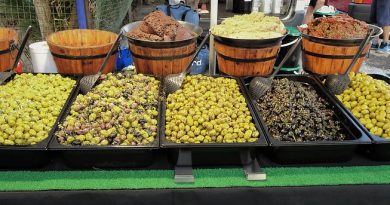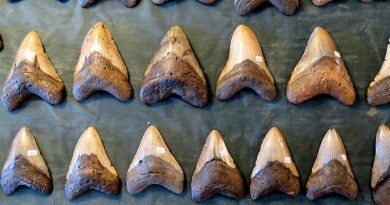Peru: Conquistadors, Incas, Inquisition
Human sacrifices, religion, greed, war and torture have all played their role in the building and crushing of magnificent empires. A continent that is now a living, breathing mixture of cultures thousands of years old – Latin America, colonised by the Spanish and inhabited for many years before by great civilisations, the centre of their world was Peru and with this mini-guide, you’ll see why!
Cajamarca: Spanish vs. Incas

Cajamarca, now a small colonial city in the northern highlands of Peru, was once a major Incan city that played a pivotal role in the fate of the Inca; it was the site of the first contact between Pizarro’s conquistadors and the vast army of Inca Atahualpa. Thousands of Inca soldiers were slaughtered in that first fateful meeting, setting the scene for the long and bloody conquest that followed.
Cajamarca: Gold Mine
Foreigners have been taking Peru’s mineral wealth ever since the Spanish conquest and descendants of the Incas still living in Cajamarca remain suspicious to this day of outsiders seeking fortune here.
Yanacocha is one of the biggest gold mines in the world, and its profits are critical for the country’s revenues—Peru is the world’s fourth largest exporter of minerals. There are plans for a $5 billion expansion of the mine, which would make it the biggest single investment ever in mining in Peru.
Francisco Pizarro christened this city “City of Kings” when he founded it on the Christian day feast day of Epiphany in 1535 and it soon rose to be the continent’s richest and most important town that had South America’s first University and also became home to the Spanish Inquisition in 1569.
Cusco
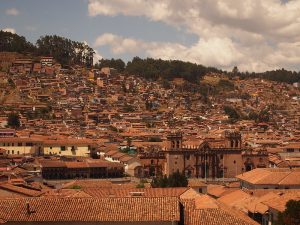
Salt terraces:
Once the heartland of the vast and prosperous Inca Empire Cusco is the continent’s oldest, continuously inhabited city in the world. The salt mines have been exploited since Inca times and during the Vice-regency, Cusco was the largest salt producer of the southern highlands. These salt mines were originally constructed by the Incas and are still worked to this day by descendants of the Inca Empire.
Sacsayhuaman
Only 2kms from Cuzco is this sprawling fortress, whose name translates to “satisfied falcon”. Built of blocks of stone the size of cars it Saqsayhuaman was meant to represent the head of the puma that was the layout of the whole town of Cuzco as envisaged by Inca Pachachutec. It was here in 1536 that the fiercest battle between the Spanish and Manco Inca took place, resulting in the death of thousands of Inca warriors. The carrion-eating condors attracted by the corpses have since been integrated into Cuzco’s coat of arms.
Ollantaytambo
Because of its strategic location in the Sacred Valley, Ollantaytambo was a prime centre within the Inca Empire & it was to here that the Incas retreated after their defeat at Saqsayhuaman. Hernando Pizarro, brother of Francisco, was in charge of a modest attempt to wrestle Ollantaytambo from Manco.
The Spanish forces, although joined with scores of native fighters, proved insufficient for the deed. The Spanish met an unrelenting assault of arrows, rocks and spears and the aqueducts were used by the Inca to flood the valley below, making it hard for the Spanish horses to find sufficient footing. Quickly sensing defeat, Hernando and his men retreated.

The Lost City of the Incas
Vilcabamba was the final stronghold of the Incas. When Manco Inca suspended the seige of Cusco in 1537 after the victory in Ollantaytambo, he began a classic guerrilla war and rendered entire portions of the Andes too dangerous for the Spaniards to enter.
The location of Vilcabamba was forgotten by most and it soon became the stuff of legend, however, in 1911 Hiram Bingham was determined to find this legendary city.
He came across both Espiritu Pampa and Machu Picchu, and concluded that Machu Picchu was the lost city.
Better excavated and currently much easier to get to, many people still think Machu Picchu was Vilcabamba. It is now known to have been Espiritu Pampa. It was there that the last Inca emperor Tupac Amaruwas captured and taken to Cuzco in chains where he was beheaded.
In just 2 years, with just 180 men and 27 horses, the Spanish got their victory. 90 years of Inca rule over the largest empire the New World has ever known was over.
Unfortunately for the founding conquistador, Pizarro, he was not around to witness this as, after ruling the Inca Empire for 9 years, he was also murdered by his own men, in 1541. He ruled the Inca Empire for a mere nine years!
Travel to Colca Canyon
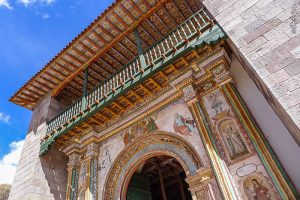
Oropesa & Tipon
Oropesa was the home of the resistant Pisaguas. After their conquest, it became a centre of royal Inca constructions, seen today in the nearby ruins of Tipon. Land here was granted to descendants of the Inca through the female line, and its name is that of one of the major marquisates sought by colonial Inca nobles, in an important blending of Spanish colonial hierarchy with Inca competition for status.
The valley lands near Oropesa were good for cultivating the imported Spanish crop of wheat which was necessary for producing that key component of the European diet, bread. At the time, bread was far more than a simple accompaniment to a meal; it was the meal to a great extent. Currently, 90% of the population is involved in some aspect of bread making.
In Inca times a bread of corn, sanko was one of the ritual offerings people made to the Gods. Even today, bread is a gift given to the people carrying the burden of feasts within Cuzco. This is a special form of the pan chuta, with one on top of another, and symbolizes the burdens that the person carries on behalf of other people before the mountains and the saints.
Andayhualilas
The small town of Andahuaylillas is 40 km southeast of Cusco.church of San Pedro Apostol de Andahuaylillas, built by the Jesuits in the 16th century. Like other Spanish and religious constructions of the time, it was built on top of a huaca, or sacred place for the Incas. Made out of adobe and brick, the church is a small structure consisting of one nave, apse and bell tower. But this church is known as the Sistine Chapel of the Andes.
Colca Valley

The Colca Valley is rich in history and tradition. It is a place where ancestral traditions still thrive in the ancient towns, while its famous canyon is one of the deepest on earth. The Inca probably arrived in the Colca valley around 1320 AD, and somewhat unusually established their dominion through marriage, rather than through warfare.
The Spaniards, under Gonzalo Pizarro, arrived in 1540, and in the 1570s the Spanish viceroy Francisco de Toledo ordered the inhabitants to leave their scattered settlements and to move to a series of centrally-located pueblos, which remain the principal towns of the valley.
The mummified body of a young Incan girl was discovered in this canyon, on Mount Ampato in 1995. Her well-preserved frozen body has shown that she was killed as an offering to the Inca gods sometime between 1450 and 1480, aged approximately 11–15 years old. The clothes she was wearing resemble the finest textiles from Cusco, suggesting she was likely to have come from a noble Cusco family.
Colca Canyon: Yawar Festival
The Yawar Festival celebrated on the Peruvian Independence Day (July 28th) is a commemoration of Peruvian independence, a way to honour the past, and a ritual to bring luck to the coming year and has been celebrated every year since Independence.
The festival is one of symbolism and remembrance. The condor, proud and soaring, represents the Incan people and the bull is a symbol of the Spanish Conquistadores. As the condor struggles in vain to get away from the bull by pecking at its flesh and eyes, the crowd looks on.
The festival of blood uses real blood and real flesh to remind the indigenous people that, like the condor, they too were tethered to a bewildering force of rage and power, but on this day nearly 200 years ago, they were freed from their oppressors and remain victorious.
Arequipa: Land of leaders
Arequipa used to be a key stop on cargo routes linking the abundant silver mines in Bolivia to the coast. It is a very loyal city and has a proud population who, over the years, have made perennial attempts to secede from rest of country; a constant source of entertainment for people from Lima. They once even designed their own passport & flag in an attempt at separation.
Known as the ‘White City’ due to the volcanic rock it is built from, after independence Arequipa became known across the continent as a land of leaders. It has housed a number of Peruvian nationalists and stands for the courage of the Arequipeñan rebels.
Arequipa is the second largest city in Peru, but walking around the centre gives you a false sense of a small colonial village, set at the foot of an impressive volcano – El Misti. The city is beautifully maintained and the name ‘Ciudad Blanca’ is no misnomer – this city really does sparkle in the sunlight.
Juanita is kept here, in the Museo Sanctuario Andinos, along with many artefacts buried with her – textiles, gold & silver.
El Misti:
El Misti is an active volcano and an almost perfect cone standing 5,820 metres above sea level. Its last major eruption was in the 15th century, when it forced the evacuation of Arequipa.
El Misti is the mountain with the greatest number of human offerings in the world. The well-preserved mummies were found in two graves buried with ceremonial pots, gold and silver statues, along with cloth blankets burned by volcanic ash.
To be sacrificed was considered a great honour for the Incas. Their ceremonies were humane in comparison with the bloody rites of the Aztecs in Mexico, who shocked the Spaniards with mass sacrifices of war prisoners.
Juanita
Juanita was found on the top of Mt Ampato in 1995. At the time it was a monumental discovery and made headlines worlwide as she was perfectly preserved due to the continual icy conditions since her death over 500 years ago.
Juanita was sacrificed on the mountain sometime between 1450 and 1480. She was approx. 11-15 years old. Her head was adorned with a cap made from the feathers of a red macaw, and she wore a colourful woollen alpaca shawl fastened with a silver clasp. She was fully clothed in garments resembling the finest textiles from the Inca capital city of Cuzco. This, in addition to evidence of excellent health, suggests that she may have come from a noble Cuzco family.
Juanita was a human sacrifice in the Inca capa cocha. – It is thought that she was killed by blunt trauma to the head: her cracked right eye socket and the two-inch fracture in her skull are injuries “typical of someone who has been hit by a baseball bat.” – The blow caused a massive haemorrhage, filling her skull with blood and pushing her brain to one side.
It would have been very difficult to carry her up the mountain when she was already dead and it is thought that she would have walked hundreds of miles, knowing she was walking to her death.
Juanita wasn’t the only sacrificial victim to be found in the mountains around Arequipa. Six additional frozen mummies of people sacrificed to Inca gods more than 500 years ago were more recently found on El Misti, Arequipa’s most dominant sight on the horizon.

